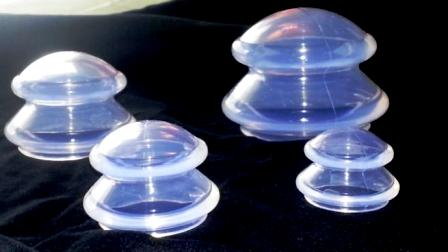
Cupping uses suction to create “negative pressure” which pulls the skin away from the body. There are different types of cupping and several different cups that can be used. Cups are made of all kinds of materials: bamboo, glass, plastic, and porcelain. Fire cupping, stationary cupping, and flash cupping are all different techniques your therapist can use to cup you. These techniques are to place cups on the body, move cups around over specific spots of tension, and to do repetitive suction of each cup. Each technique has its own therapeutic purpose. For example flash cupping technique is used to break up mucus in the lung tissues.
Why should I receive cupping?
Cupping is great for a host of ailments and illnesses. It can also be an excellent supplement to your massage. If you have any of the following issues cupping could really be for you.
Indications:
Headaches/Dizziness
Respiratory ailments such as: Cough, asthma, pneumonia or chest colds
Digestive Disorders
Insomnia
Anxiety
Fatigue
Diabetes
Chronic injuries
Inflammation or Edema
Pain in a specific area (legs, back, etc.)
What benefits can I expect from cupping?
Cupping pulls stagnation from the tissues; increasing circulation and lymphatic flow. It loosens adhesions, restrictions in the muscle tissues and can even break up scar tissue. In increasing circulation cupping heals the skin by flushing the capillary beds, increasing the function of the sweat glands and withdraws toxins. The pulling action, created when using cupping, stimulates the parasympathetic nervous system creating a "deep relaxation" effect as well. Cupping also stimulates the production of synovial fluids which helps joint movement and can decrease pain in sore joints. If used in conjunction with massage therapy cupping will enhance the benefits of your massage by loosening the tissues further so your therapist can be more effective.
What are the side effects of cupping?
It is common to have large discolored circles on the area which was cupped. These can last for a few days and up to a week. The area can look like large dark bruises but should not hurt even when you touch it. Discoloration is very common after receiving cupping. These are not bruises. "When injuries occur deep in the muscle, bleeding often occurs causing deep bruises. There will also be edema in the area involving the coagulation of sticky proteins. The combining presence of these elements usually results in stagnation of circulation to the area- resulting in pain, dysfunction, and chronic conditions.When circulation is sluggish or compromised in an injured or diseased area of the body, insufficient oxygen gets to the cells, and there is a local build-up of waste products." Contemporary Cupping Methods 2006 ICTA Hologiadyne Inc. Which then show up on the tissues after receiving cupping.
Contraindications:
Cupping should not be preformed on pregnant women or very young children. Also if you have varicose veins cupping should not be done on top of the veins. If you have a fever, skin ulcers, edema, dermatitis, or very sensitive skin cupping is contraindicated for you. If you are taking medications for circulatory problems you may need a note from your doctor before receiving cupping.
If you would like more information on cupping please feel free to visit: http://www.cuppingtherapy.org


